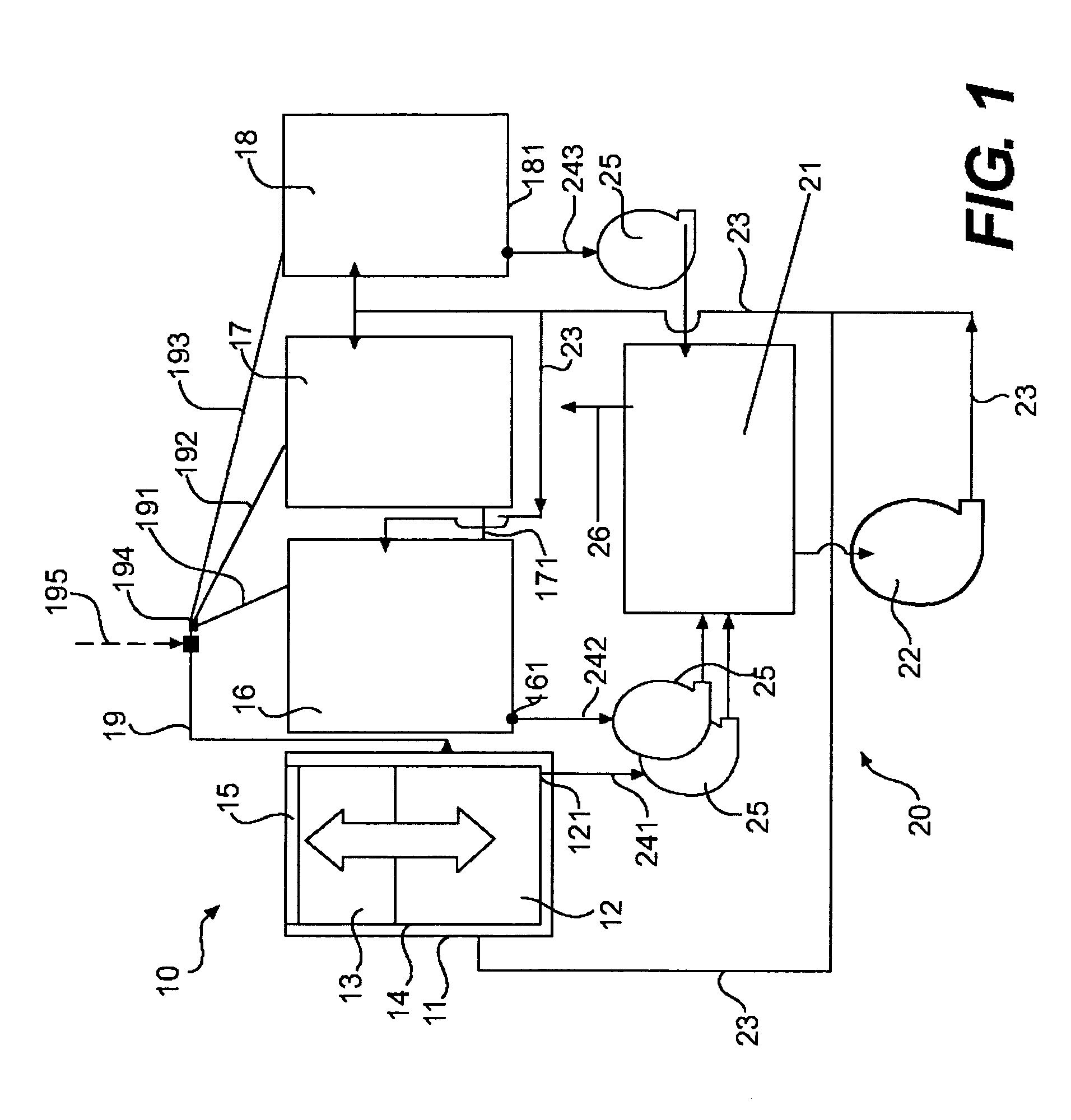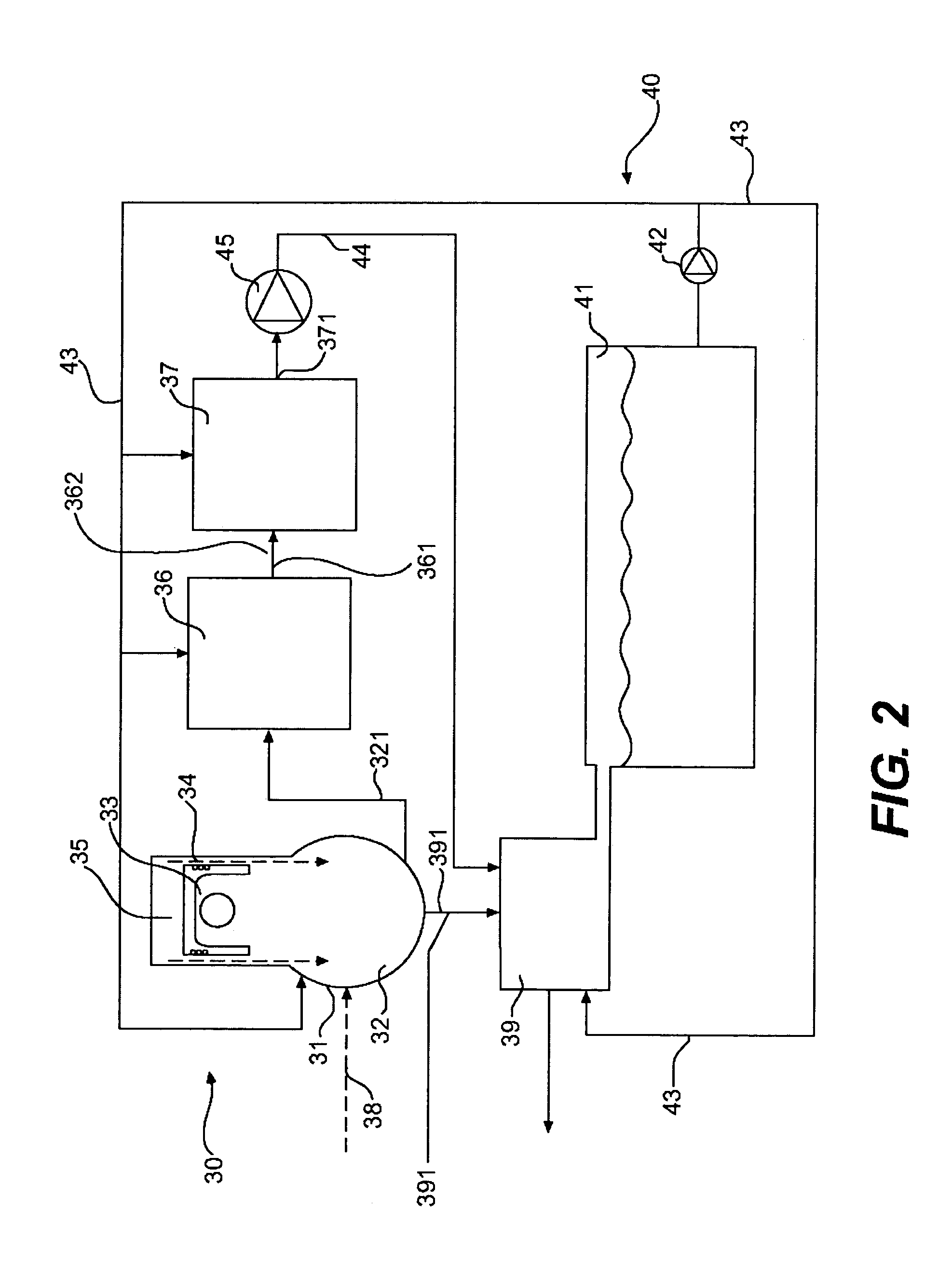Lubrication system for a power plant
a lubrication system and power plant technology, applied in the direction of pressure lubrication with lubrication pump, engine lubrication, mechanical equipment, etc., can solve the problems of reducing engine output, air may remain in the crankcase, and other chambers connected to the crankcase are not maintained under negative pressure (or vacuum), so as to improve engine efficiency and lubricant quality, and improve the quality of lubricant. , the effect of dripping more efficiently
- Summary
- Abstract
- Description
- Claims
- Application Information
AI Technical Summary
Benefits of technology
Problems solved by technology
Method used
Image
Examples
Embodiment Construction
[0036]A dry sump lubrication system in accordance with one embodiment of the present invention will now be described in greater detail in connection with FIG. 1. An internal combustion engine and a gearbox are combined to form a power plant or common drive unit 10 having a common dry sump lubrication circuit 20. The drive unit 10 includes a crankcase 11 having crank chamber 12 formed therein. The crank chamber 12 houses the crankshaft (not shown) and the piston arm (not shown), which are operatively connected to a piston 13.
[0037]The crankcase 11 includes at least one cylinder 14. However, the present invention is not limited to power plants 10 with only one cylinder 14. The crankcase 11 may include one, two or more cylinders 14. The cylinders may have either an in-line arrangement or a V-type arrangement. A piston 13 is located within each cylinder 14. The piston 13 is slidably disposed in the cylinder 14 and, by its operation, defines a combustion chamber 15 therein.
[0038]The driv...
PUM
 Login to View More
Login to View More Abstract
Description
Claims
Application Information
 Login to View More
Login to View More - R&D
- Intellectual Property
- Life Sciences
- Materials
- Tech Scout
- Unparalleled Data Quality
- Higher Quality Content
- 60% Fewer Hallucinations
Browse by: Latest US Patents, China's latest patents, Technical Efficacy Thesaurus, Application Domain, Technology Topic, Popular Technical Reports.
© 2025 PatSnap. All rights reserved.Legal|Privacy policy|Modern Slavery Act Transparency Statement|Sitemap|About US| Contact US: help@patsnap.com



